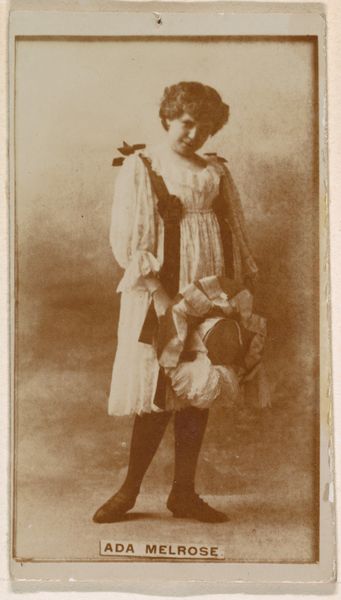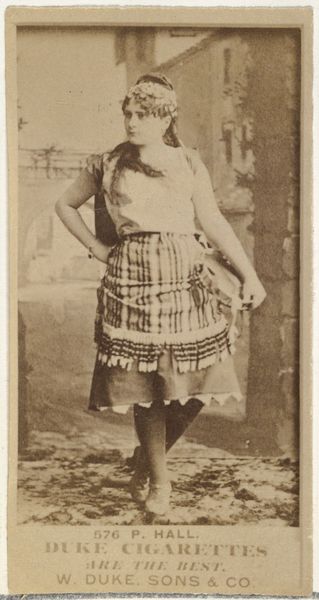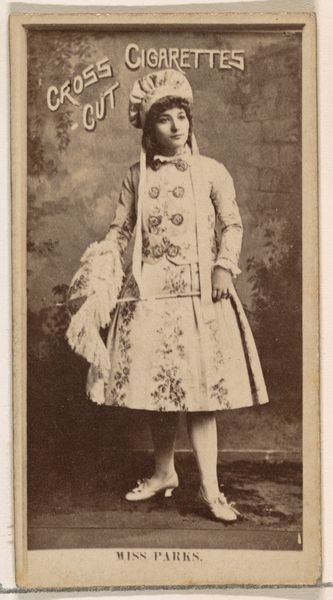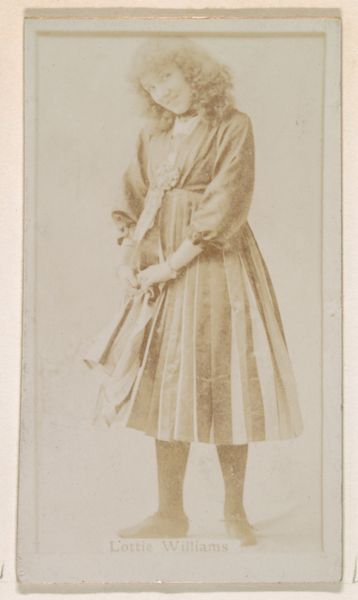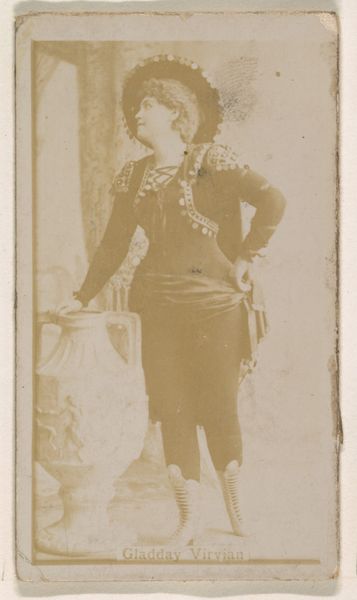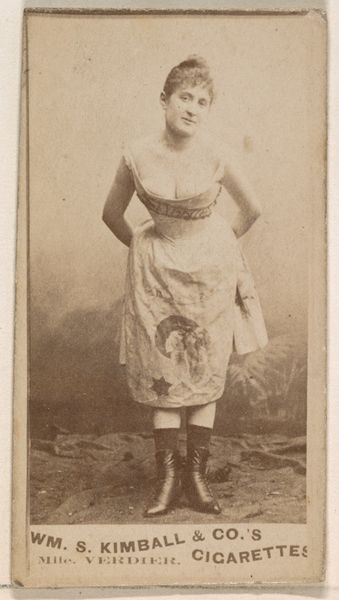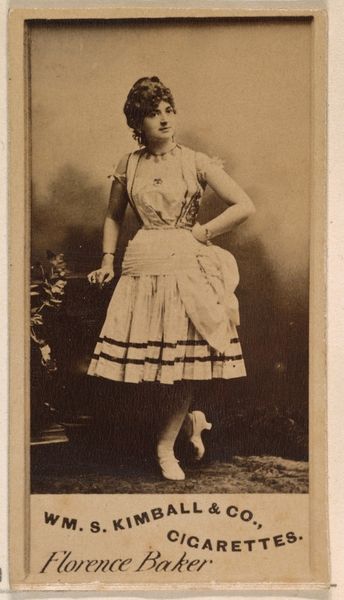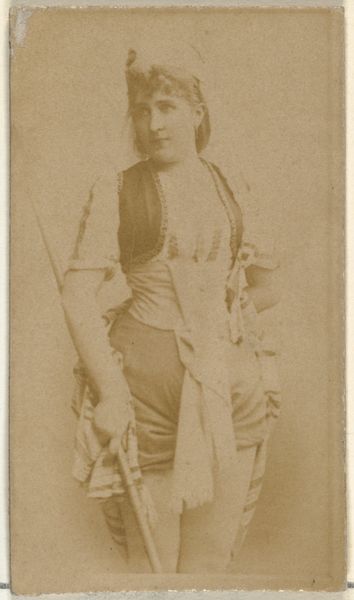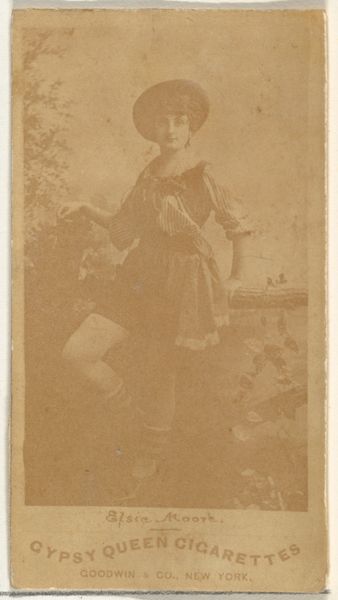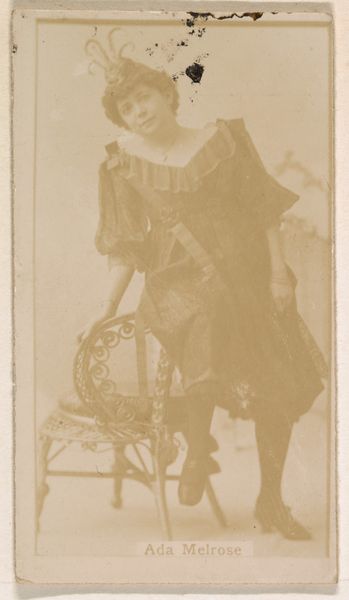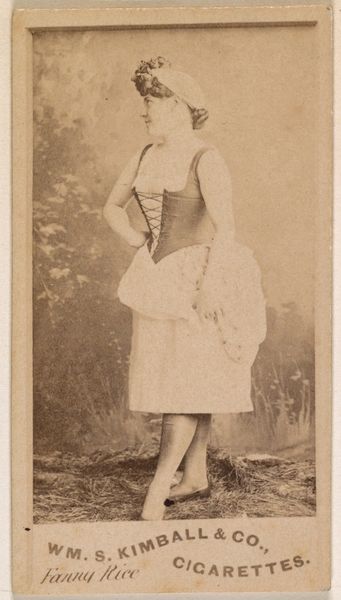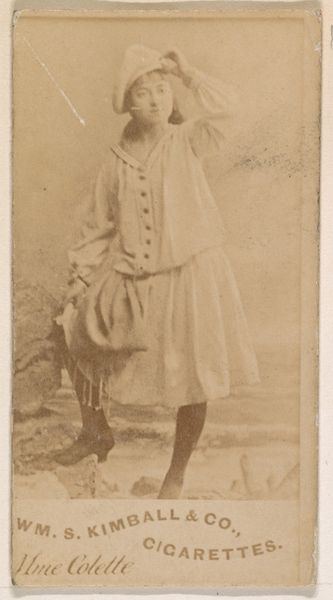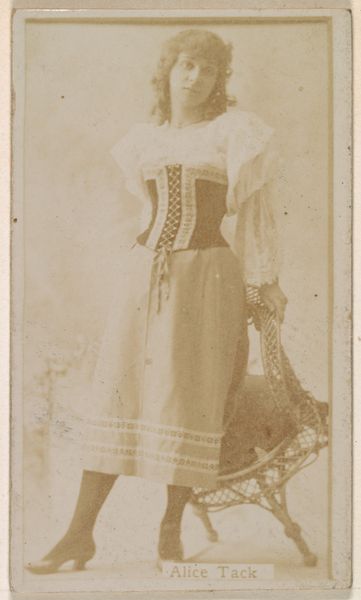
photography
#
portrait
#
vintage
#
muted colour palette
#
photography
#
historical fashion
#
framed image
#
genre-painting
Dimensions: height 105 mm, width 64 mm
Copyright: Rijks Museum: Open Domain
Editor: We're looking at a photograph entitled "Portret van een Franse zoeaaf, staand met sabel," dating from around 1870 to 1900, likely by H. Brailly & A. Roure. It’s really striking—almost like a staged tableau vivant, especially with the gentleman’s costume and pose. What narratives or cultural echoes do you pick up on here? Curator: This image is fascinating. Consider the Zouave uniform itself. The flamboyance, the loose-fitting trousers—originally North African garments adopted by the French military. What do you think that sartorial borrowing communicates about power, identity, and cultural appropriation during that colonial era? Editor: So the clothing is less about military function and more about symbolism? A display of France’s reach? Curator: Precisely. Look at the man’s hand resting on the sabre. Not posed aggressively, is it? More as a casual accoutrement. The sword, here, acts almost as a cultural symbol – a potent signifier of martial authority, blunted in this contained presentation. How do you interpret that gesture of control or perhaps even studied nonchalance? Editor: That's insightful. The background almost seems generic, like a studio prop, drawing focus onto the figure and, therefore, those symbols you pointed out. It's almost like the image wants us to interpret these colonial relationships… Curator: And, crucially, consider that photography itself was still relatively young. Staged portraits such as this allowed for a controlled narrative. Perhaps it was used as a propaganda piece of the time… Editor: I didn’t really think about that. So many layers! Thank you, this makes me look at the photo in a completely different way. Curator: A potent reminder that what appears as a simple image often carries complex cultural baggage. Every picture tells a story, or perhaps many.
Comments
No comments
Be the first to comment and join the conversation on the ultimate creative platform.
